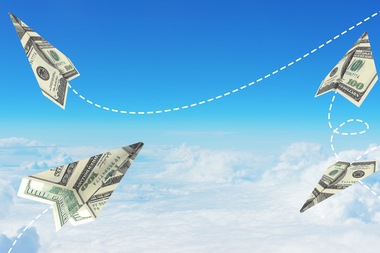The gloves are off.
What already took place in Europe with Ryan Air and easyJet, and moved subtly across to the domestic arena in the USA with Southwest and Spirit, is now happily making an impact on the transatlantic flight.
Yes, the discount airlines are moving in big time.
While they are not impacting the big boys yet, this could be the start of a new Freddie Laker revolution. And what to do to respond to a market trend of low-cost long-haul flights? How do you retool your factory and make your product more efficient, less expensive, and less dependent upon goliath overhead drain than the big three consolidators?
What we all know is that you cannot take an airline called United and shorten it to Ted and pretend that it is just the same as having a cheaper, more efficient airline carrier.
Been there, done there. That…did not work.
The emergence of the low-cost flights–long-haul flights–has come at a time when oil is cheap. Airlines are starting to make money by pairing down the size of their fleets, using more fuel efficient planes, and charging higher prices to get us from A to B. So who is trying to break up this party?
A recently purchased Norwegian Air ticket from Copenhagen to Boston costs $180 one-way. Other carriers like Canada’s WestJet Airlines and Iceland’s WOW Air are offering prices that are half of what the competitors charge. Furthermore, they are providing a business class option at a tenth of the price of the rip-off business class ticket that you are charged with the top transatlantic airlines. Norwegian operates on 26 routes and on those routes, its share is a staggering 13%. JetBlue is starting to feel that they can make a move in this market too and Southwest is also making noises.
The bottom line is that low-cost long-haul carriers will become a growing threat to transatlantic profitability.
Because the USA and EU have an open skies aviation treaty, carriers can charge what they like which used to spell bad news for the consumer. However, with the low-cost guys, it is completely consumer-driven. This is a big chunk of market to grab. Put a fuel efficient Dreamliner on a route between New York and London and charge $350 roundtrip with a $650 business class option and you are likely going to get takers and more importantly converts. We have all seen how absolutely useless a bunch of points or a loyalty club can be when you really need them. If the low-cost carriers can provide comfort, good legroom, a fun experience on the plane, and all at relatively inexpensive prices, I think that this is just a growing market.
What kind of market is this and who controls what? Delta and United control about 13% of transatlantic traffic, American and British is around 10%, Lufthansa is 7%, but there is a staggering 40% that is up for grabs. The discounters have smelled the prey. The CEO of Norwegian intends to add more flights from more USA cities to more European cities. He claims that ticket prices will be less than $100 one-way. I’m putting my money right now on Norwegian – they fly nonstop, the food is as good as any of the other carriers, they fly the Dreamliner, and they provide super value in two classes of services.
This is all good news for consumers. This should be fun to watch.

